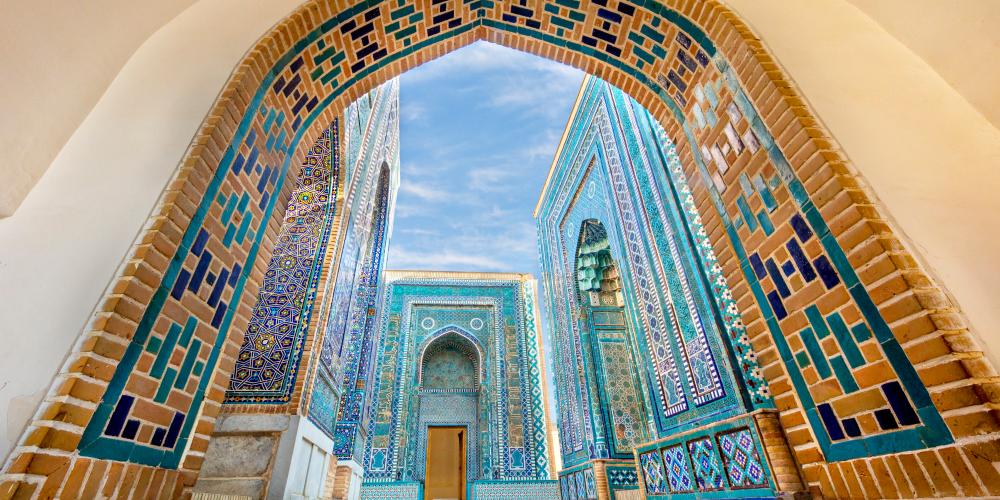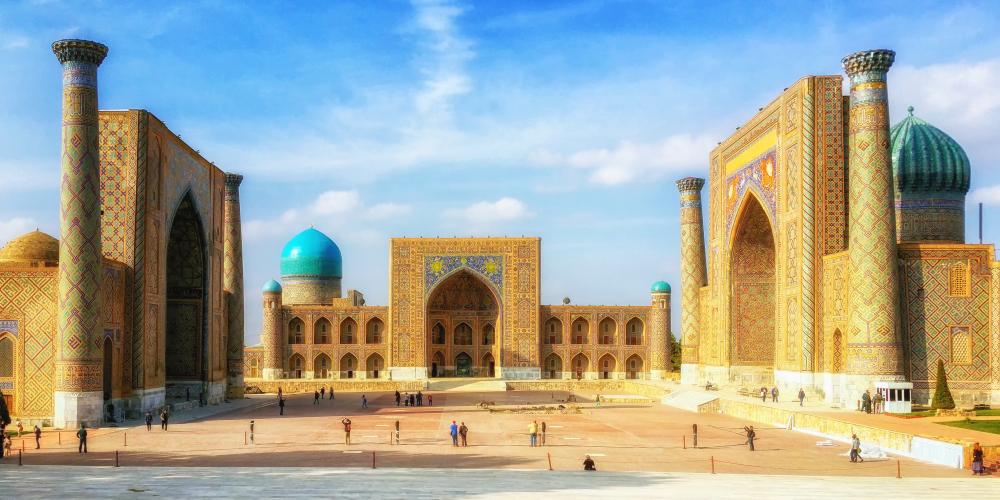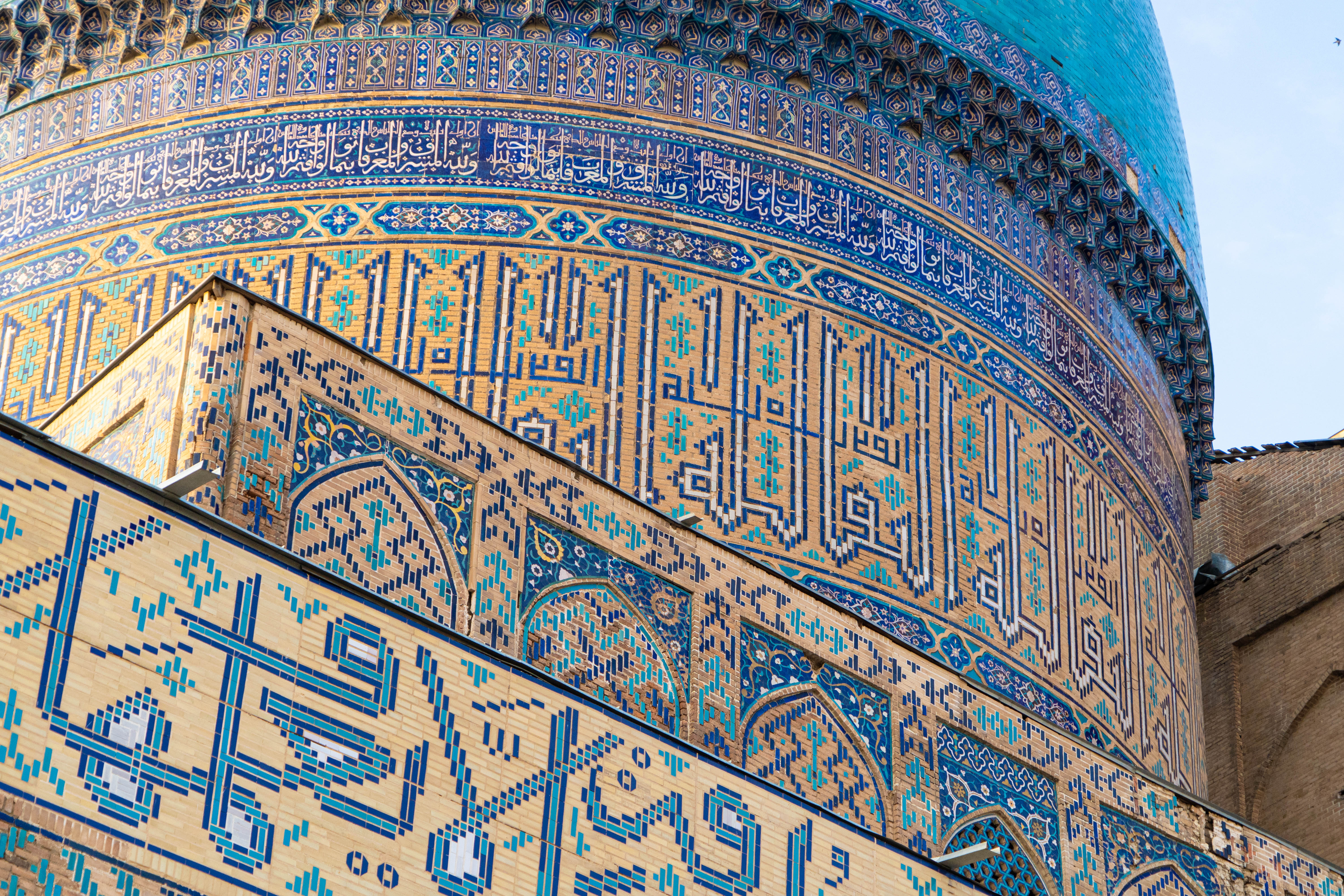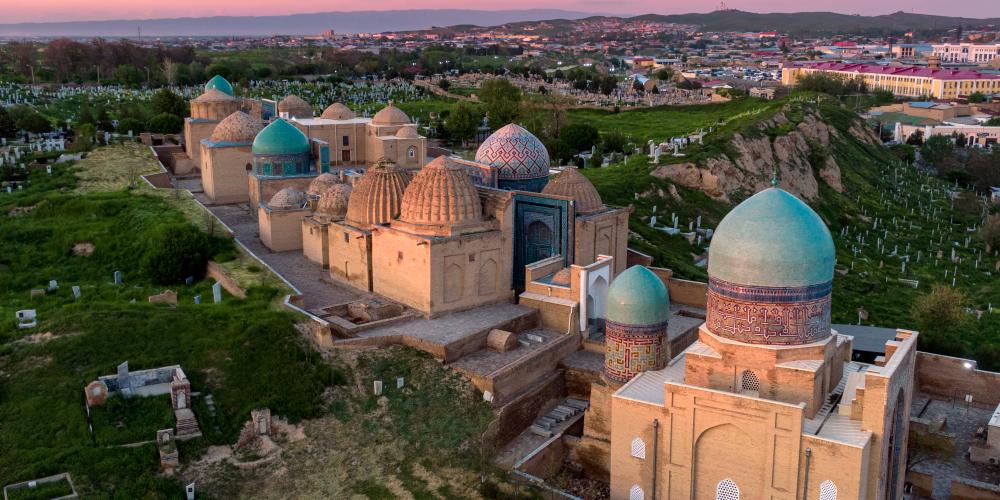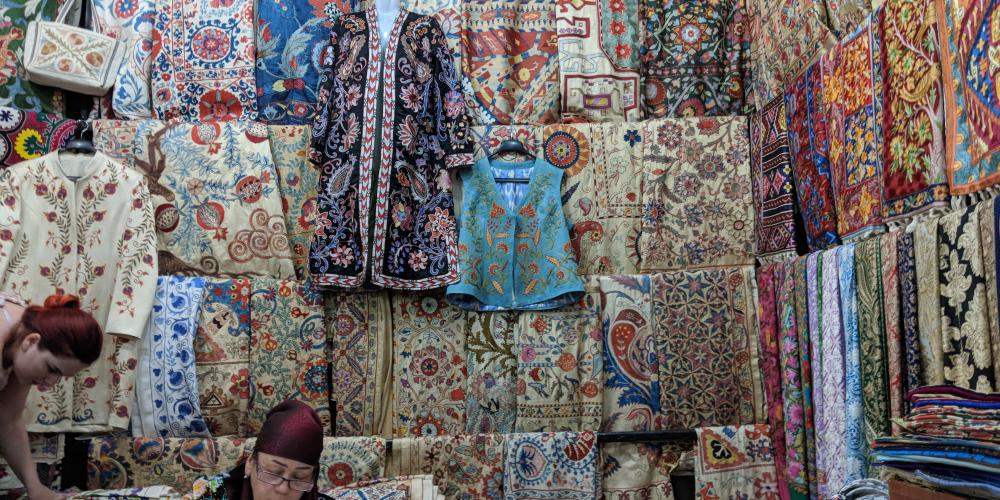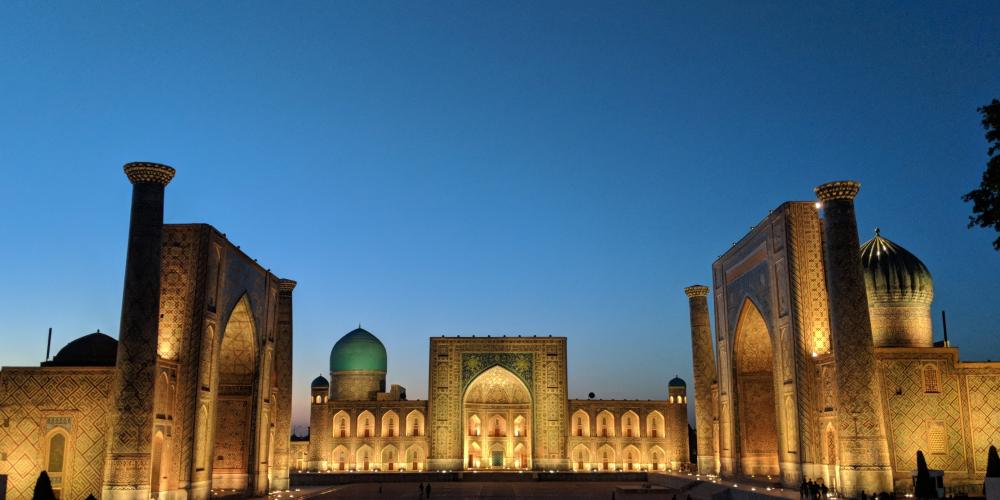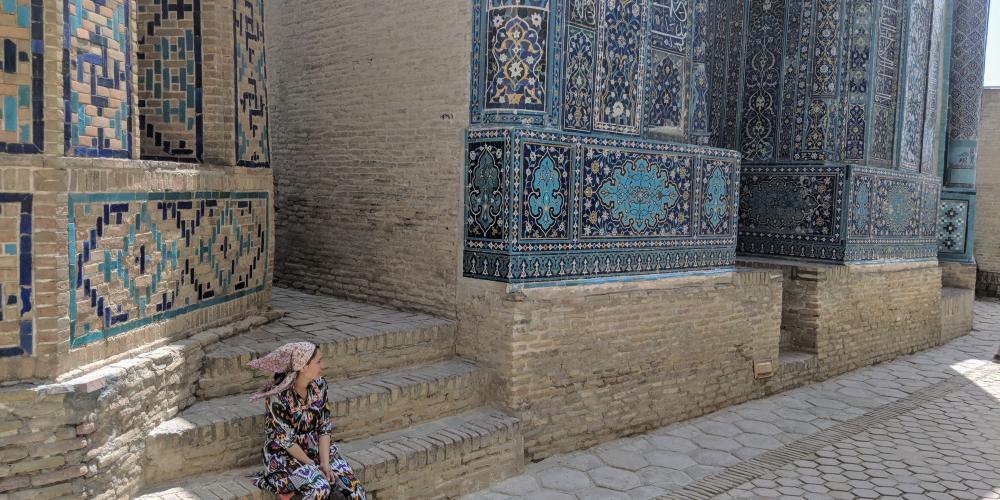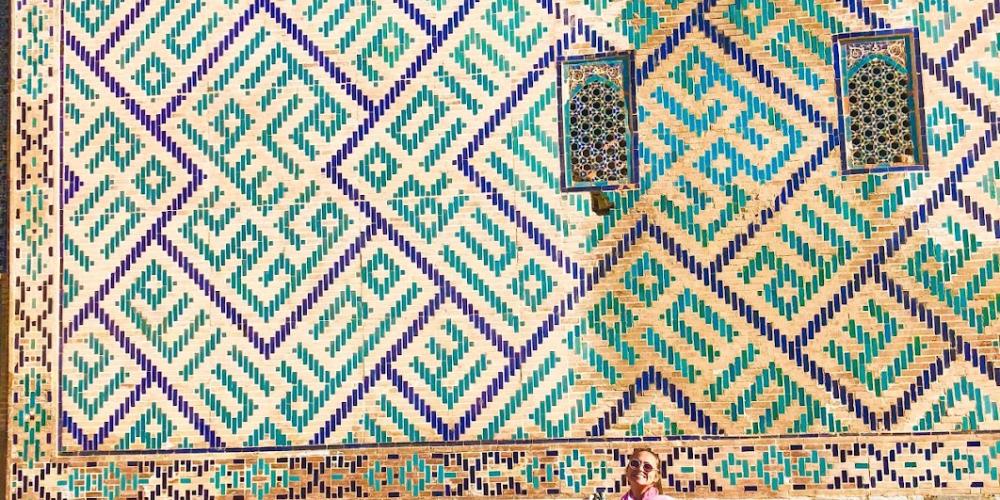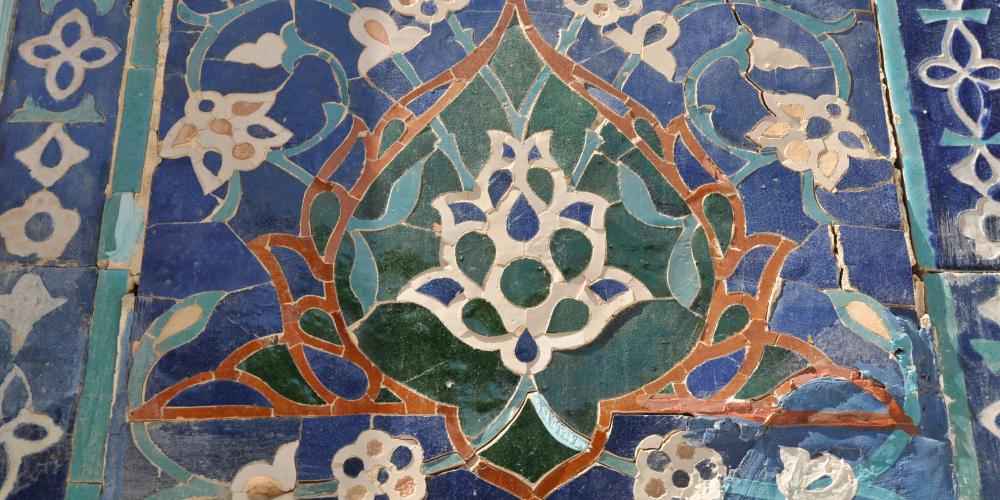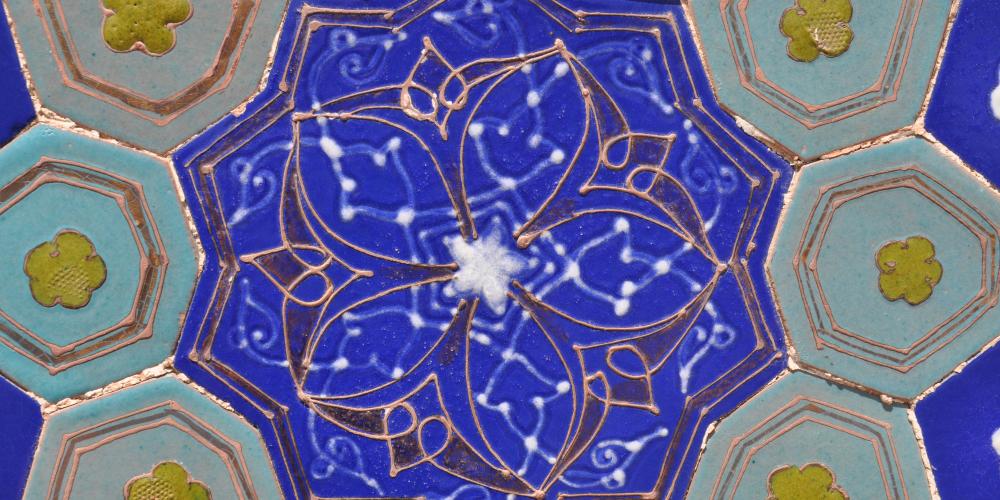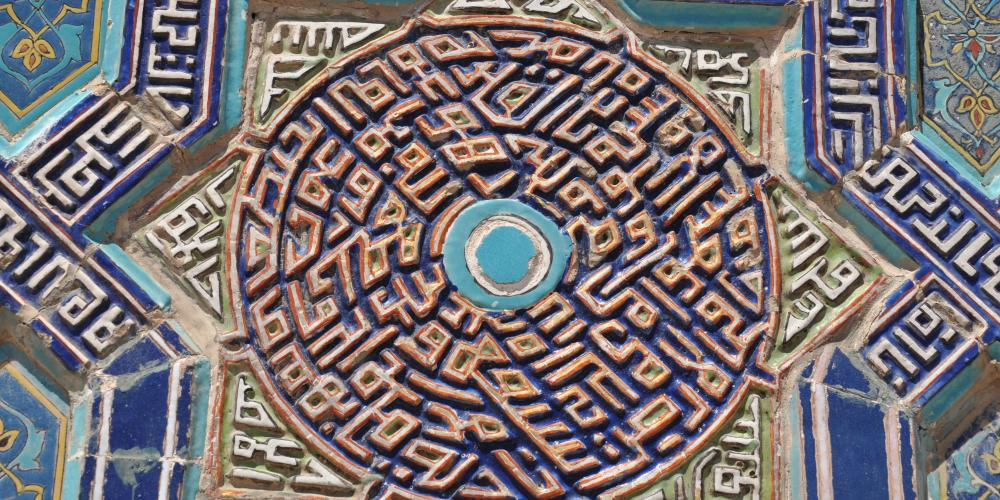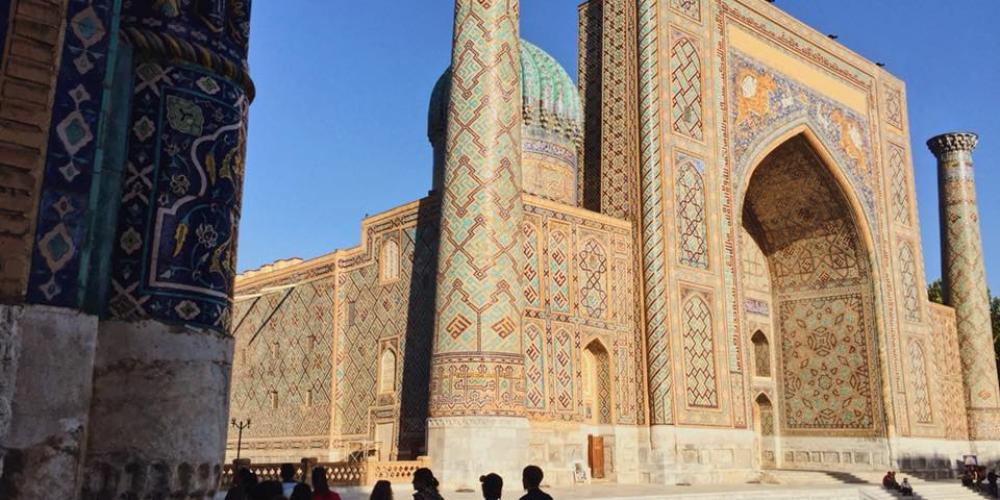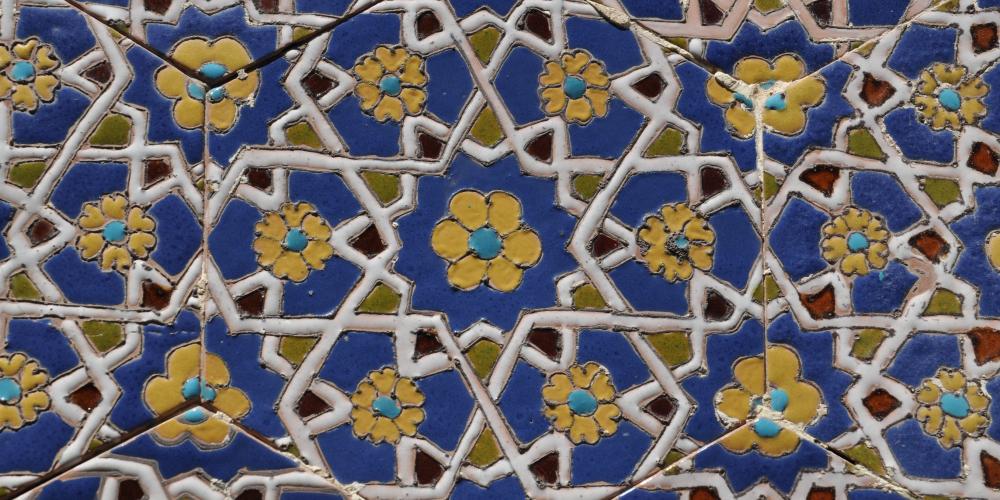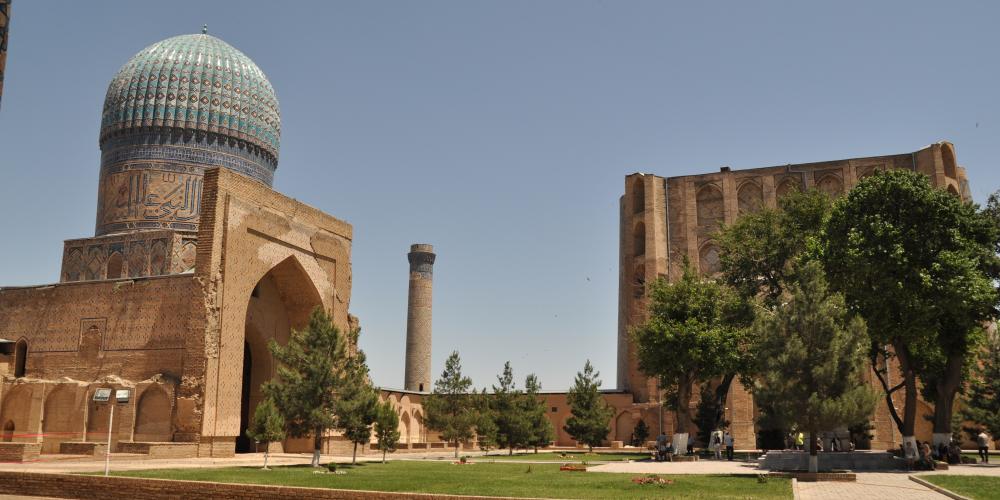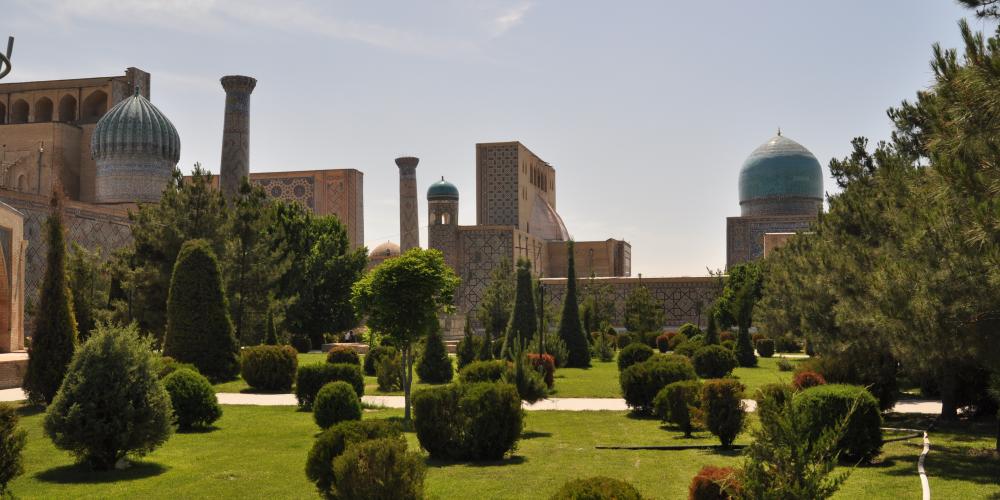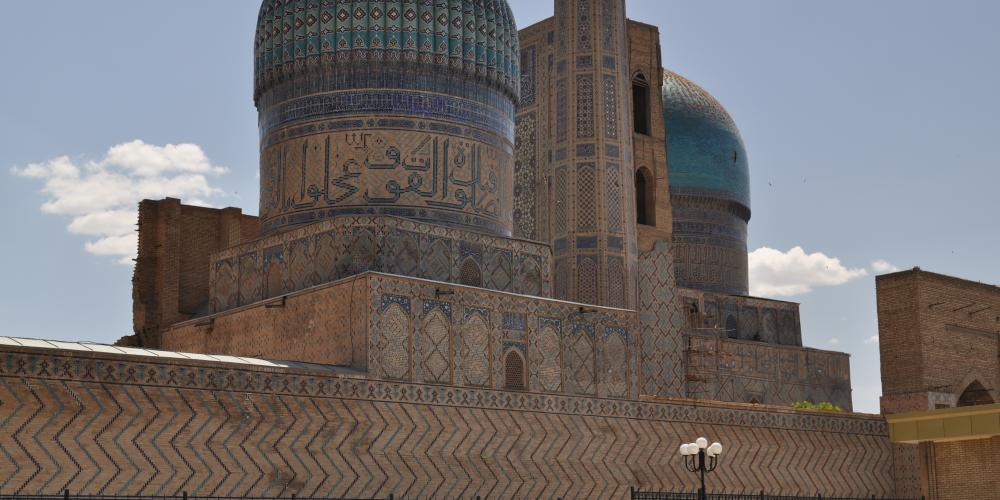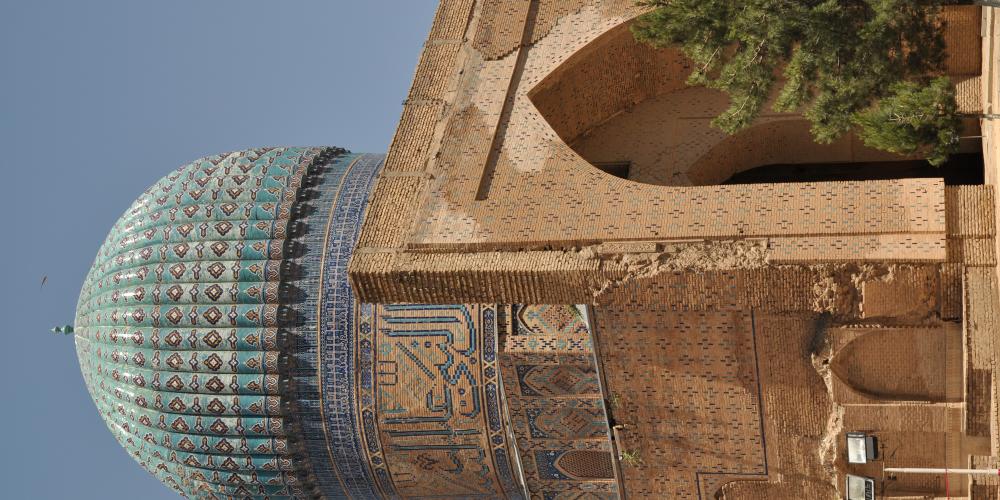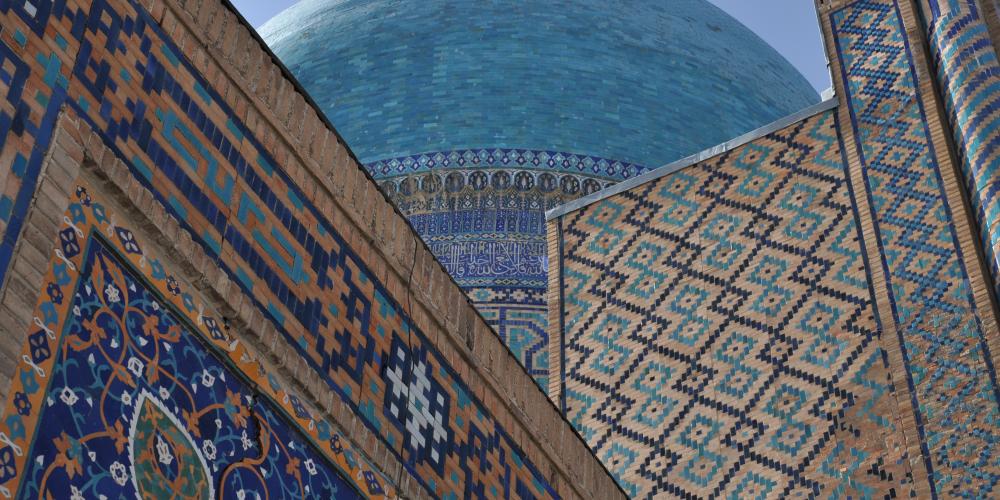Samarkand - Crossroad of Cultures

“Everything that I heard about Samarkand is all true, absolutely everything! Except for one thing: it turned out to be more beautiful than I could imagine” - Alexander the Great
Samarkand has been a prominent trading hub along the Silk Road for over 2500 years, a crossroads of cultures at a critical juncture on Central Asia's trading network. Known over the centuries for its craft production and strong merchant economy, the city has seen empires rise and fall, with the monumental constructions and lavish artworks a legacy of its wealth and power.
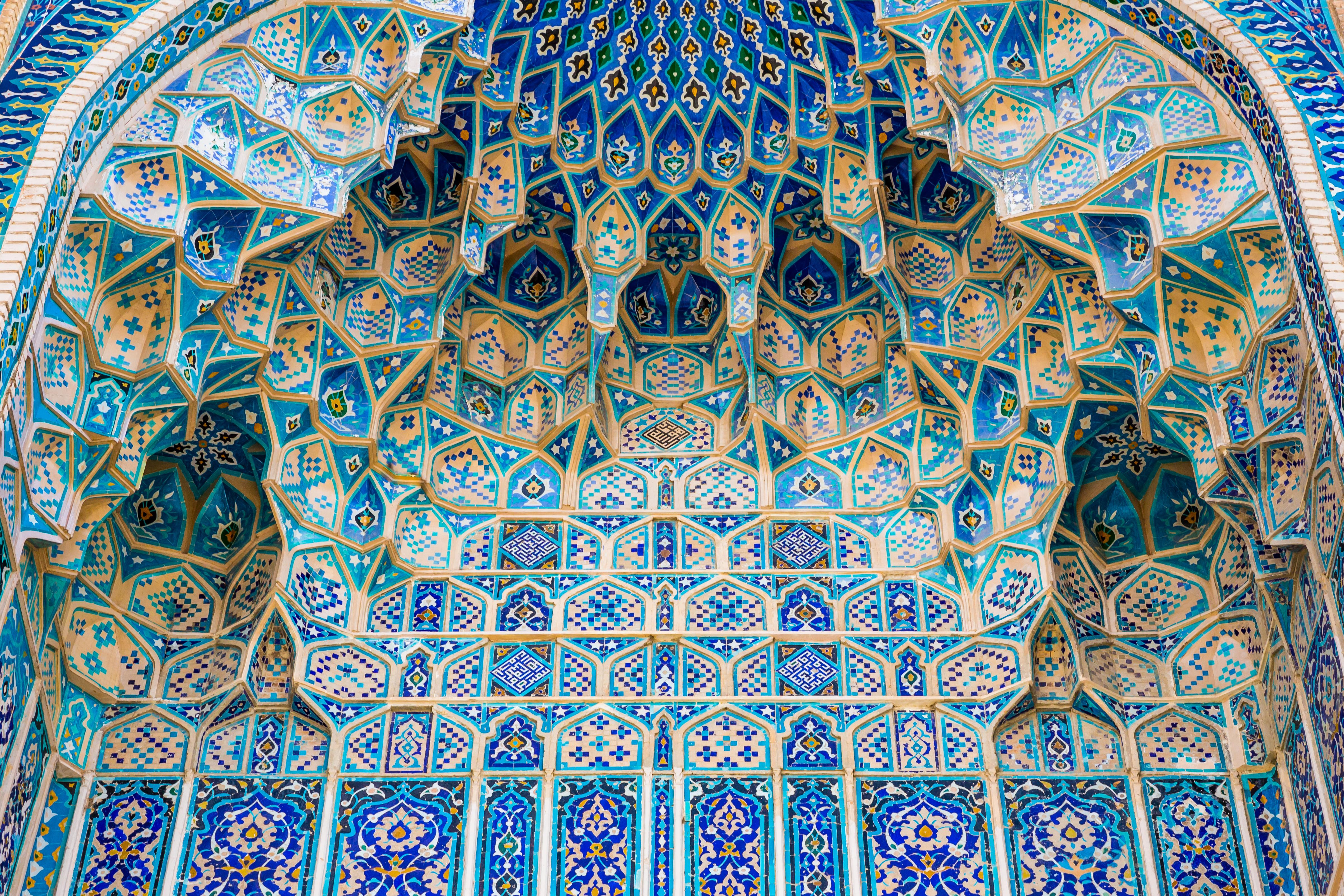
The first settlements here date back to around 1500 BC, but it was in the 7th century BC that the first city, then called Afrosiab, was founded. As it grew, it was conquered by Alexander the Great in 329 BC, and soon after inhabited by the Sogdians, a people of Iranian origin known for their trading skills. Sogdian letters have been discovered dating back to 313 AD providing evidence of their trading network of precious metals, spices, and cloth that reached as far as China. Later discoveries of inscriptions and other evidence show trade routes with India and Byzantium as well.
Afrosiab prospered until 1220, when it was invaded by Genghis Khan and the Mongols. Up to that point, it had been a cultural crossroads, inhabited mainly by Zoroastrians and Christians until the 8th century, with influences from Buddhism, Hinduism, and Manichaeism. And, after the Muslim conquest, it had been one of the major Muslim learning centres from the 9th century. Evidence of these times has been found in the murals and paintings at the Afrosiab archaeological reserve.
But it was in the 14th and 15th centuries that the city blossomed into a true jewel of the Silk Road. As the great conqueror Timur (also known as Tamerlane) established his vast empire across Central Asia, he chose this site for his new capital. As the centre of the Timurid Empire, it was an important trading city and its power and wealth grew quickly. Timur brought in architects and artisans from across the region (sometimes by force) to construct magnificent monuments, each more dazzling than the next. With imposing facades covered in colourful mosaics and domes that pushed engineering abilities to their limits, Samarkand became a glittering metropolis. The design of the city would go on to influence future constructions across the Islamic world in countries like Persia, India, and Turkey. Although Tamerlane’s legacy is typically one of war, brutality, and conquest, locally he is better known for his progressive development plans that brought Samarkand back to life.
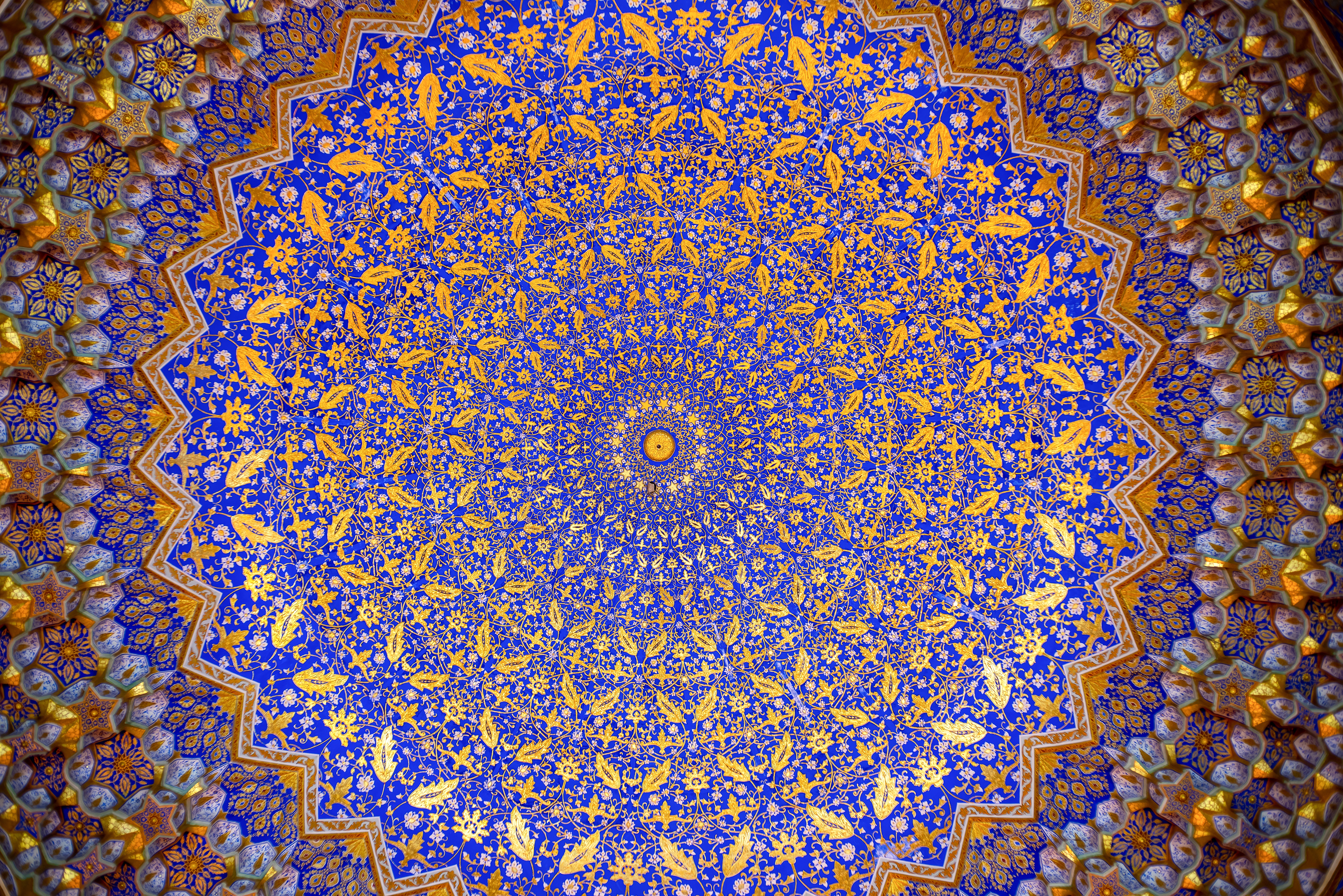
Tamerlane’s grandson and successor, Ulugh Beg, developed the city into a scientific centre in the early-mid 15th century, and continued the infrastructure campaigns of the empire in Samarkand, building the first madrasa on the site that would become the Registan. Successive rulers added more monuments, even as the political power shifted to the new capital of Bukhara in the 16th century. Over generations, Samarkand gradually lost its importance, suffering a serious economic decline in the 18th century. It wasn't until the Russians occupied the city at the end of the 19th century and connected it by rail that it regained its strong role along the region's trading route. Despite the modern expansion of Samarkand, the medieval city that Timur founded survived the test of time remarkably well, with several monumental complexes and more than 300 ancient constructions still protected.
Seeing the sights of Samarkand
The main historic sights of Samarkand are quite close together in the historic part of the city, making it relatively easy to visit them all in a day, either by foot or car. This suggested itinerary will lead you through all the highlights.
Start your day at Gur-E-Amir Mausoleum, a beautiful monument with a fluted azure dome. The mausoleum is the resting place of Timur, where his tomb takes a central place inside the main building, alongside other members of his family, including his successor Ulugh Bek. Stints of bad luck are said to be associated with the tampering of these tombs. When Timur’s stone marker was removed and broken by 1740 warlord Nadir Shah, his son was brought to near death, only to recover once the stone was returned to Samarkand. A 1941 Soviet anthropologist had opened the crypts of Timur and Ulugh Bek, and the next day Hitler had attacked the Soviet Union.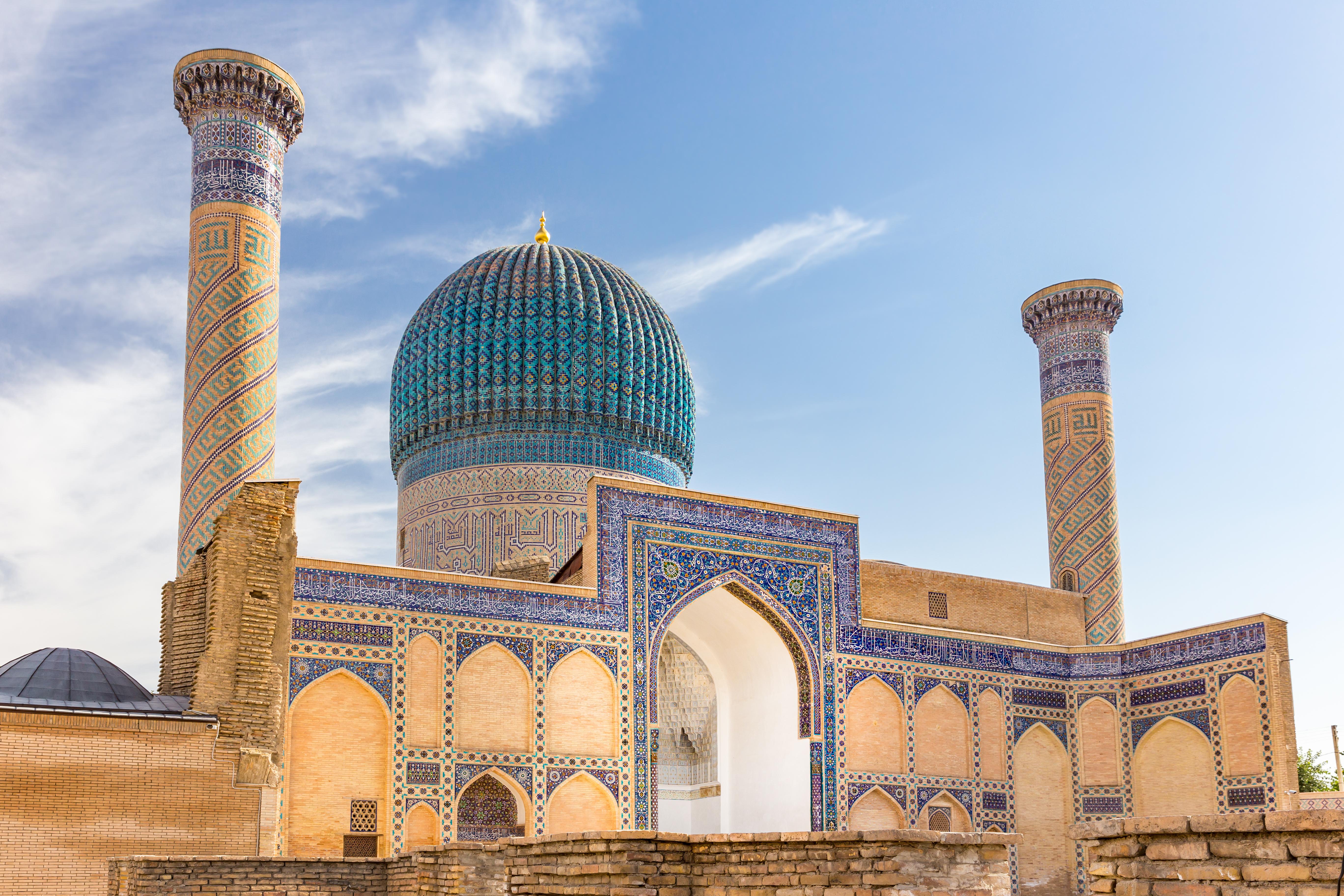
Half a kilometre away is the Registan, a public square that acted as a commercial centre during the Timurid Empire, with a plaza that hosted a bazaar and was also used for royal announcements. The characteristic blue tiles of Samarkand can be seen decorated on each of the three madrasas (Islamic schools) that surround it, each one featuring a large courtyard surrounded by former classrooms. On the western side is the oldest of the three, Urugh Bek Madrasa, completed in 1420. Opposite it is Sher Dor Madrassah, completed in 1636, while the central Tilla-Kari Madrasa, completed in 1660, has a stunning mosque within its walls.
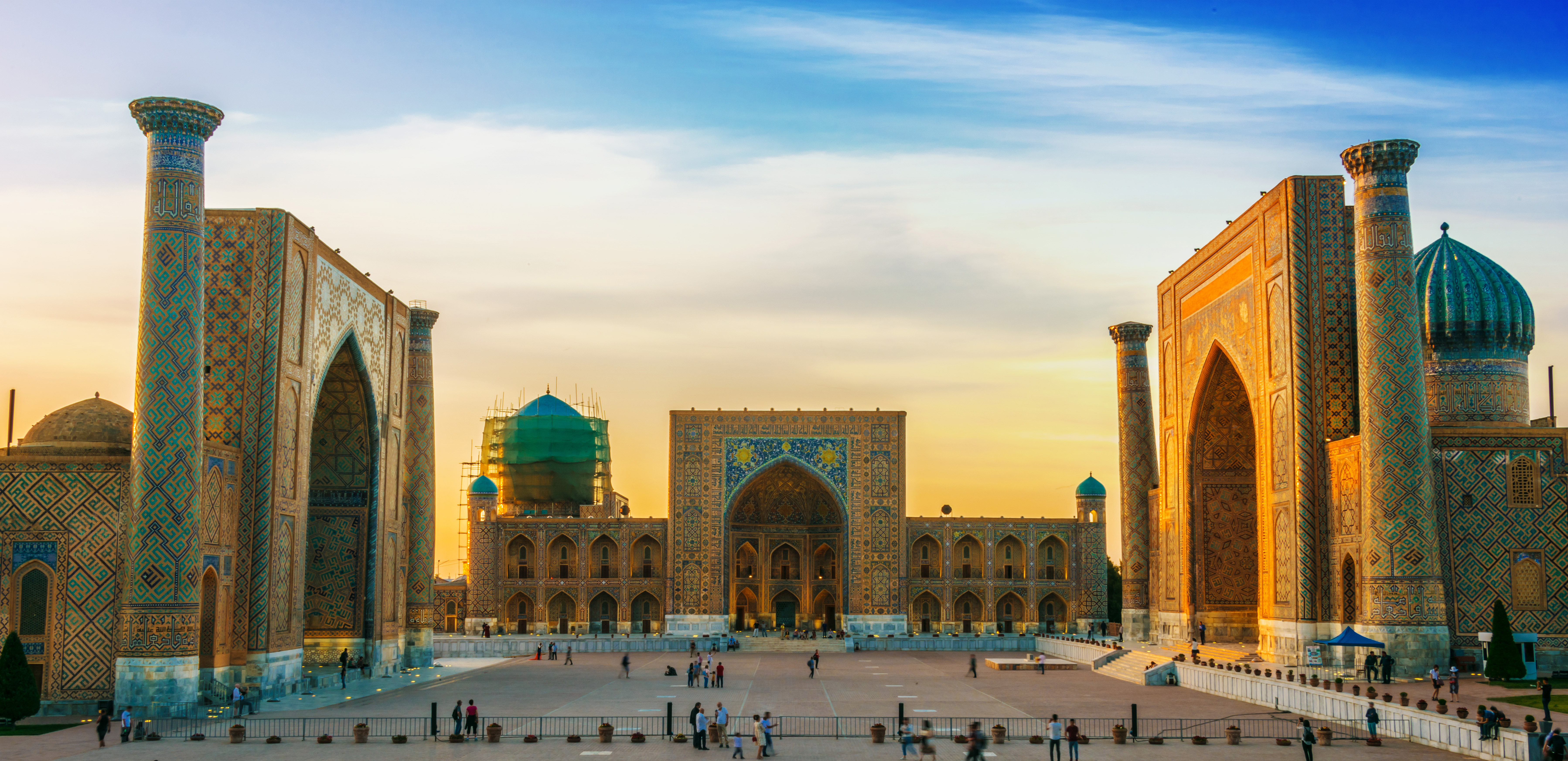
Heading north, you'll reach Bibi Khanum Mosque, the largest of its kind in Central Asia, able to hold about 10,000 worshipers. The mosque was built from the spoils of Timur’s invasion of India, but his ambitious architectural plans led the structure to be too heavy to support its own weight and it began to crumble before construction was completed. Construction stopped in 1405 when Timur suddenly died from pneumonia in Kazakhstan and his successors did not have the means or motivation to fix the structural instabilities. Regardless, it remained in use until the 17th century.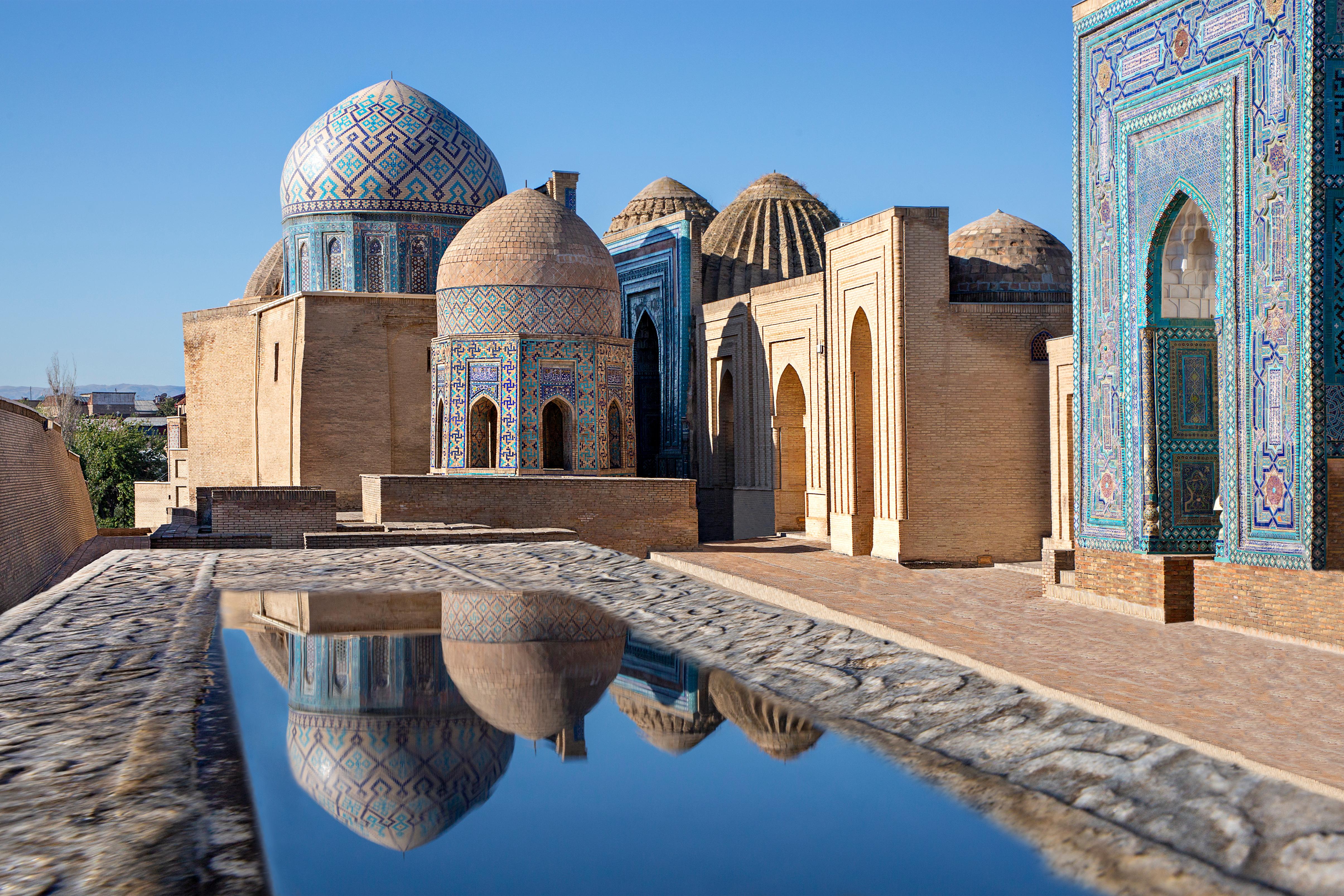
From Bibi Khanum Mosque, a pedestrian bridge leads across the highway to Shah-i Zinde, one of the most popular sites in Samarkand. This avenue of mausoleums consists of grand tombs resembling palaces decorated with brilliant bursts of colour and geometric patterns exuding the essence of Central Asian artwork and design. The name means ‘Tomb of the Living King’ and holds the grave of 7th century Qusam, the cousin of the prophet Mohammed.
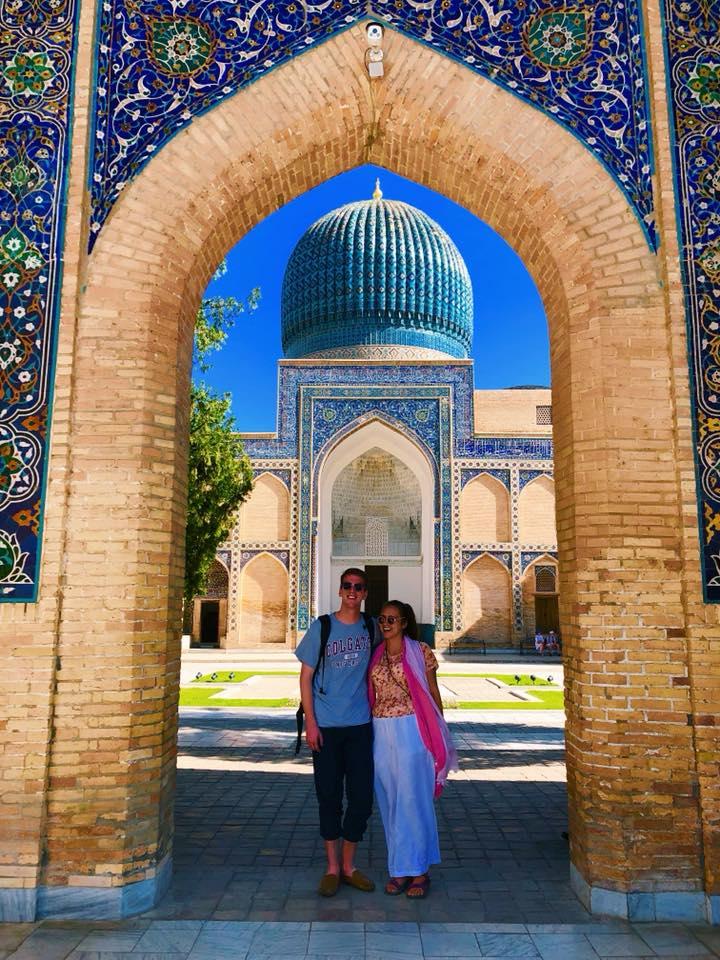
On the hill above the mausoleums is the Afrosiab Museum and the archaeological site of Afrosiab from the 7th century BC. Excavations have uncovered 7th century frescoes (mural paintings) that depict exotic scenes of foreign dignitaries. Nearby is Ulugh Bek Observatory, a three-storey structure built in the 1420s by the grandson of Timur, Ulugh Bek, who may have been better known as an astronomer than as a ruler. Exhibits at this small museum include a model of the original observatory and a copy of the 1605 map of the world that was created here.
From the imposing madrasas of the Registan, covered in golden and turquoise mosaics, to the atmospheric corridor of mausoleums at Shah-i Zinde, a visit to Samarkand is a journey back to the glory days of the Silk Road. Across the city, the brightly colored tilework, intricate artworks, and soaring domes lead you through the cultural crossroads that created one of history's greatest capitals. Still a vibrant city, you can watch the musical and theatrical performances displaying Uzbek traditions, and experience local living as you shop the bustling bazaars filled with traditional cuisine and crafts. Overlooking it all is the ancient city’s archaeological reserve, where it all began.
How to get there
From Tashkent: The fastest way to get to Samarkand is by train. There is a high speed train that takes about 3 hours, or the regular train takes about 3.5 hours.
From Bukhara: Travelling by train is the best method from Bukhara as well, with daily high speed trains taking about 1.5 hours. The regular train takes about 2.5 hours.
Within Samarkand: While Samarkand is a fairly large city, most attractions are concentrated to one area and are within walking distance from each other (about 15-30 minutes by foot). There are also several bus or taxi options.
When to visit
Most sites in Samarkand will be open year-round. Spring (March-May) and Autumn (September-October) typically have milder weather. The summer season can be quite hot, while the winter season can be cold and snowy.
How to Visit
Samarkand has much to offer, so it is recommended to plan on 2 - 3 days for a meaningful experience. It is considered a very safe city with an extremely low crime rate. Travelling by foot from site to site is possible, also allowing you to discover hidden gems along the way. Taxis are a popular form of transportation with the typical rate being around 12,500 SOM for a 10-15 minute ride. Remember that most taxis are shared, so the driver may continue to pick up passengers if there is space in the vehicle. Respectful price negotiation may be expected as well. Photography is widely accepted throughout all main attractions. Modest dress is appropriate at all public sites out of respect to local culture. Knees and shoulders should always be covered.
